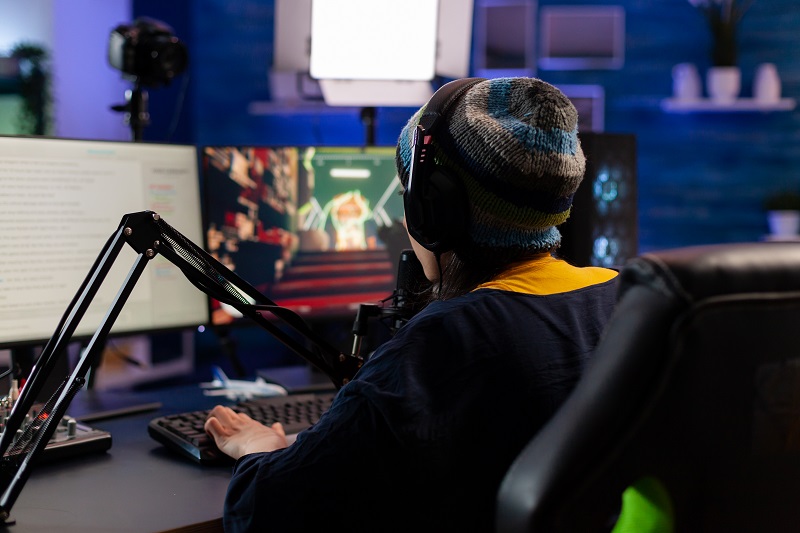
Monetising Content: The Game Live Streaming Moment Is Now
Maciej Sawicki takes a look at the state of the game live streaming market. Check out why this is a revolution for content monetization and distribution akin to the one seen in the early YouTube days.
There are over 3,000,000 streamers going live each month, not just in gaming, but in several areas. Although streamers create the content, they have very limited control over it. This situation usually leads to streaming platforms often exploiting by streamers.
Why Does Content Belong to Creators?
To understand why the market is broken, we need to start with a fundamental question: “who owns the content?”
During the early days, due to the limited number of streaming platforms available, streamers have been given little choice. And they had to waive their right to monetise their content by the monopolies in charge. If streamers wanted their content to reach an audience, they were at the mercy of the broadcasting behemoths that ruled the game streaming world.
The formula around monetising content was pretty simple. Streaming platforms give a small fraction of the revenue to the streamers, in some cases leaving them empty-pocketed.
This is just a glimpse of the rapidly growing market. Back in 2018 its value was estimated at $8.25 billion and is expected to reach $22.09 billion by 2022. Due to the growing popularity of game streaming technology, things are changing, with new platforms popping up and levelling the playing field.
How Platforms Operate to Win Over Streamers
A streaming platform is only as good as the content available on it – however, it also requires a lot of content to reach critical mass. A streaming platform with no content is like a restaurant with no food. Why bother?
Platforms compete among themselves to attract streamers. So let’s break down how the platforms operate, what they offer, why the market is becoming fragmented and how this will impact the game streaming ecosystem.
You can compare a streaming platform to a publisher. They take content from the streamer and publish it, but without paying the streamer anything. Streaming platforms work with partners, brands and media agencies because they claim they own the content. This allows them to earn money on the content they get for free, subsequently sharing some of that money with a portion of the streamers.
‘Some’ refers to the biggest streamers, often being part of esports organisations or agencies. Not only they get revenue share from platforms, but also they work with brands directly. The smaller, lesser-known streamers, micro streamers are left out because streaming platforms believe these micro-influencers have no option to monetise the content on their own. And that’s true. They used to be too small to get individual sponsorship deals.
What Has Changed in the Game Streaming Industry?
Now, micro-influencers or streamers can work directly with brands, which disrupts the flow of money and how the market works. The role of a streaming platform is less important as the money flows directly to those who produce and own the content. These are the content creators – streamers. The process of sponsorship was manual limiting only to the biggest streamers, agencies and esport orgs. Now, this has changed.

Streaming platforms are not happy about it. But there isn’t much they can do about it. They understand that what they offer – the technology to distribute the content – is no longer unique.
Platforms need to offer perks to keep streamers. As the playing field is levelled between streamers and streaming platforms. Which perk is the most important? Platforms have begun to accept that all streamers, not only the biggest, can monetise their content by working directly with brands.
This is a win-win situation. Platforms benefit from the content streamers produce and they share the revenue with streamers meanwhile they do not forbid streamers from monetisation through their own means.
With so many streaming platforms competing for streamers, if one platform tries to ban streamers from working with brands, streamers can simply move to another one. There is no justification as to why some streamers may work with brands because they are big enough and others can’t. You need to treat all your content creators the same.
How Can Your Brand Benefit From Game Live Streaming?
The live-streaming market is decentralised both in terms of content production and distribution. At the same time, 80% of the streamers are Gen Z, and 70% of them want to be self-employed. A streaming career looks like a perfect choice for them. Every market participant, both streamer and platform, should benefit from the phenomenon of streaming on equal terms.
Research shows that they believe goods in the digital realm should be distributed in a fairer, more equal way. It’s not fair that only the biggest streamers and streaming platforms have access to the revenue streams. Every market participant, both streamer and platform, should benefit from the phenomenon of streaming on equal terms.
At inStreamly, we believe that the digital world should guarantee everyone’s independence. We strive for streamers to be able to work as they want and with whom they want.
I don’t believe that streaming platforms will be able to maintain their market position and strategies in the long run with the current model in place.
The market will be divided and decentralised. And technologies such as inStreamly will support independent streamers who want to play on their rules. The moment for the market to change is now, and we are here to make a difference.
Do you want to partner with streamers and promote your brand on live streaming? Check our case studies for inspiration and see how to start your first campaign with inStreamly.
Main cover photo by Gary Butterfield on Unsplash




